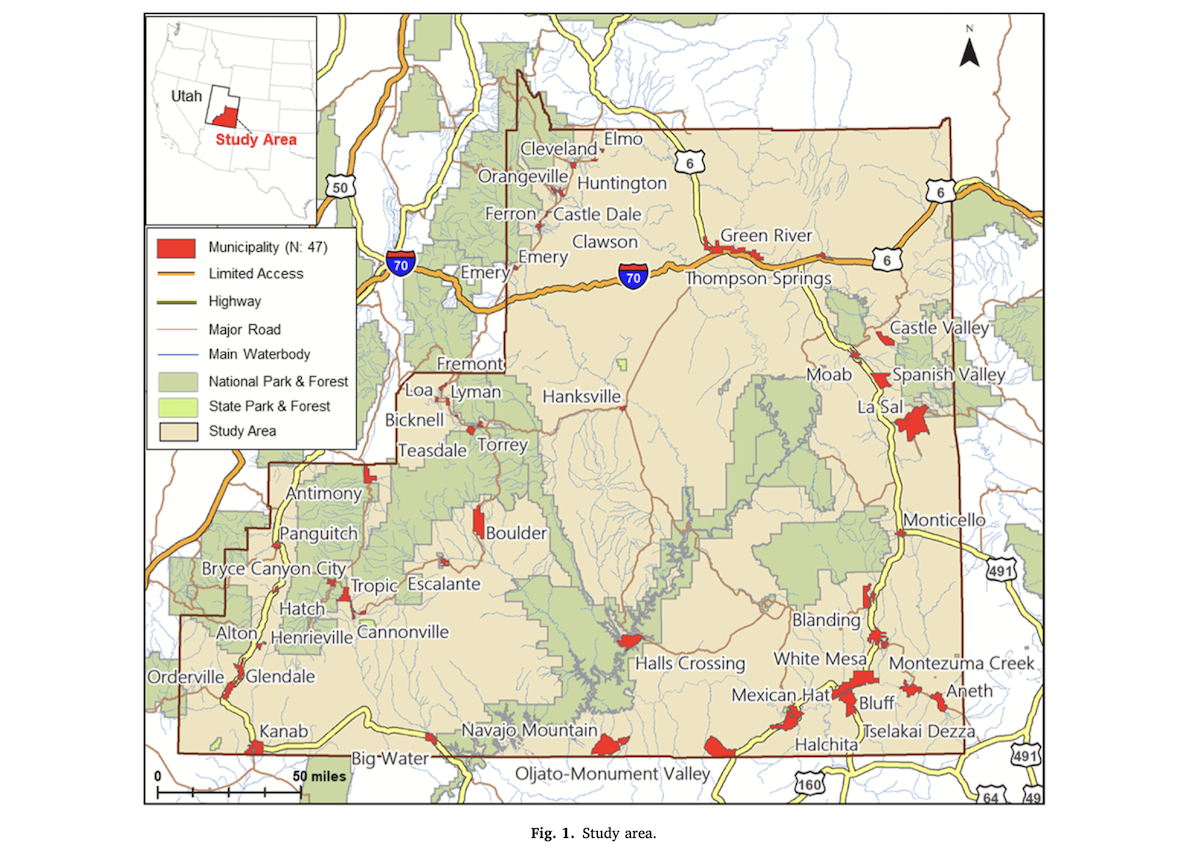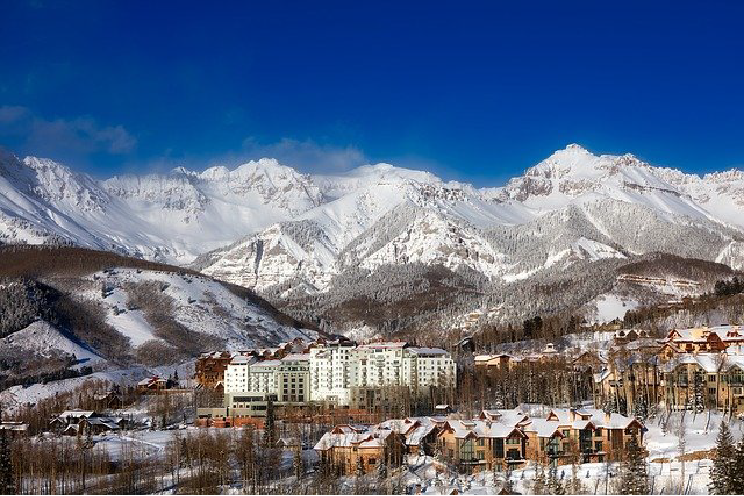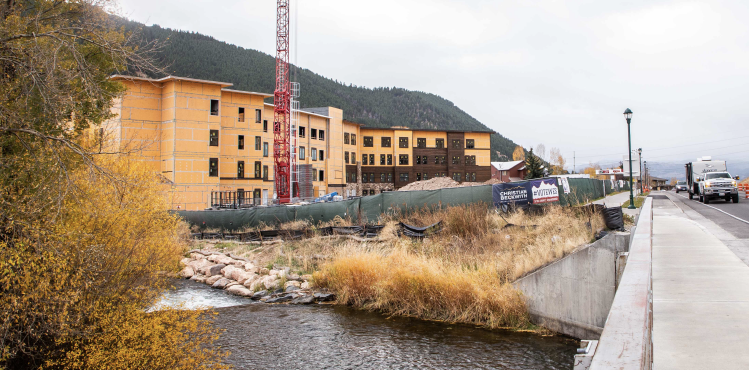Tourism Supply and Demand in the Gateway Communities of Southeastern Utah

Abstract
Although outdoor recreation and tourism drive the economies of many gateway and natural amenity regions (GNARs), community leaders in these areas often lack a clear understanding of how to strategically invest in resources in ways that lead to a balanced portfolio of assets that meets market demands. This research investigates the relationship between the supply of and demand for outdoor recreation and tourism in GNARs across southeastern Utah. We characterize supply assets using four asset classes: economic, environmental, infrastructural, and sociocultural. We quantify the demand for outdoor recreation and tourism using geotagged social media in gateway communities adjacent to national parks and other public lands.
Our analysis revealed environmental assets (historic trails, viewpoints, proximity to national parks, and campsites specifically) are highly and significantly correlated with outdoor recreation and tourism demand. The findings can guide local, state, regional, and federal officials in strategically investing in tourism assets that align with market demands. For example, strategic investments across the study area in the development of viewpoints that showcase the region’s spectacular red rock and desert landscapes, as well as campsites where visitors can base their explorations, are likely to see significant and positive returns in terms of visitation.
Below is a summary of the research published in the Journal of Destination Marketing & Management. To access the full article, please visit the journal's website or email Jordan.Smith@usu.edu
Study Area
47 municipalities, located in the six southeastern-most counties of Utah met the criteria of what a GNAR community is. These criteria include having a population of between 150 and 25,000, being within 10 miles (16.1 km) of national parks and other protected and public areas, and being more than 15 miles (24.1 km) from an urban area. With abundant natural and cultural resources, gateway communities are known for outdoor recreation and tourism activities, such as boating, hiking, paddling, and off-highway vehicle riding. Although outdoor recreation and tourism have become one of the main economic drivers of the gateway communities of southeastern Utah, they are still facing numerous challenges for effectively developing outdoor recreation and tourism resources in ways that will bolster local economic development and resilience. The names and locations of the 47 gateway communities of southeastern Utah are shown in Fig. 1.
The Four Asset Classes
The supply of outdoor recreation and tourism assets provides the physical infrastructure that supports the demand for outdoor recreation and tourism activities, and this process generates economic, environmental, infrastructural, and sociocultural value in communities. Previous research has noted the importance of separately quantifying economic, environmental, infrastructural, and sociocultural assets to develop tourism and outdoor recreation management plans.
ECONOMIC: For economic outdoor recreation and tourism assets, researchers have frequently quantified the number of businesses within the accommodation and food service sectors, this includes hotels, motels, and restaurants.
ENVIRONMENTAL: Measures of environmental assets have varied widely, including measures such as the quality and accessibility of natural resources.
INFRASTRUCTURAL: Previous research on infrastructural assets tends to focus on easily quantifiable metrics such as the number of developed camp sites or boat ramps as measures of supply.
SOCIOCULTURAL: In terms of sociocultural outdoor recreation and tourism assets, researchers have usually focused on the number and types of attractions, events, and services, including festivals, historical places, and museums.
A few studies have also considered the characteristics of local residents in a host community, such as the size of the population and their attitudes toward outdoor recreationists and tourists, to understand supply (Boley et al., 2017; Mwongoso et al., 2021). Across these four assets, investigations have focused on a broad range of specific questions ranging from strategic planning efforts and resource allocation decisions to the development of marketing strategies.
Key Findings
Strategies for investing local, state, and federal infrastructure monies are anything but consistent across the U.S. Some states have boards that allocate legislative funding to outdoor recreation and tourism infrastructure projects, while others distribute monies directly from state agencies (such as departments of transportation and governors’ offices of economic development) that have the legal authority to do so. Still others distribute funds through a combination of different mechanisms such as state boating and off-highway vehicle programs funded via registration monies. Even when statewide strategies for tourism infrastructure do exist, they are often vague, lacking specific direction on what types of projects infrastructure funds should be used on. Federal funding for infrastructure investments is similarly distributed through numerous channels (e.g., grants administered by the Economic Development Administration; Land and Water Conservation Funds administered through the National Park Service, etc.), each of which has their own priorities and regulatory mandates. Collectively, regional, state, and federal entities can benefit from data, analysis, and knowledge on how to make infrastructure investments in ways that support a balanced portfolio of outdoor recreation and tourism assets that meets market demands.
This work focused exclusively on the supply of and demand for outdoor recreation and tourism in gateway communities, a unique type of municipality which has been overlooked in previous investigations. We argue these communities need more focused attention in the future, given they have many options when choosing how to invest in outdoor recreation and tourism, but often lack the data and information necessary to make empirically-grounded decisions. Do these communities invest in new museums? Incentivize the establishment of new bed and breakfasts? What about funding the development of more trailheads and trails? All of these are options for gateway communities looking to build their local outdoor recreation and tourism economy. But they are not all options that the small, underfunded, and understaffed municipal governments in gateway communities can explore through trial and error. Each takes significant investments in time and resources.
Our research, which has been informed by previous case studies of individual GNARs as well as other more regional research, has been guided by the proposition that GNARs can make strategic investments in outdoor recreation and tourism assets to build a balanced supply portfolio that meets market demands. Specifically, our approach outlines how categorizing outdoor recreation and tourism assets into four distinct classes (i.e., economic, environmental, infrastructural, and sociocultural) can guide the supply and demand management efforts of destination development and marketing professionals. Our findings suggest practitioners in southeastern Utah should prioritize strategic investments in specific types of environmental and infrastructural assets that are significantly correlated with demand in their efforts to build balanced supply portfolios. In southeastern Utah’s gateway communities, a prioritization of developing viewpoints, campsites, and scenic byways can stimulate outdoor recreation and tourism demand.
The implications of our findings go beyond southeastern Utah’s GNARs and can contribute to the broader literature on destination resilience and competitiveness. Drawing upon concepts prevalent in the destination marketing and management literature, such as destination competitiveness, branding, and visitor experience optimization, our findings highlight the importance of aligning asset development with demand patterns. This alignment is vital for destination management organizations everywhere and underlines the universal relevance of our approach to asset categorization for strategic investment and marketing decisions. This framework facilitates a systematic analysis of strengths, weaknesses, opportunities, and threats to diverse tourism and outdoor recreation assets, thereby informing tailored strategic development plans that resonate with both visitor demands and destination identity.
Local and regional officials can use similar approaches in other GNARs to analyze and subsequently strategically invest in distinct types of outdoor recreation and tourism assets that ultimately enhance the economic resilience of their regions. Our study addresses the critical need for evidence-based decision-making in resource allocation within destination marketing and management. This is particularly relevant in the context of limited budgets, where prioritizing investments are needed to yield positive returns on investment and community impacts. There remains a significant amount of research to be done on outdoor recreation and tourism promotion efforts in GNARs. Future investigations into the unique ways that marketing and promotion efforts benefit and harm the economies and residents of these communities is needed. Similarly, more work is needed on how GNARs can overcome the limitations of their small municipal government budgets and staff by leveraging regional networks of technical expertise and shared experiences. These are just a few of the many avenues that tourism scholars, geographers, sociologists, and other academicians can consider to help focus their efforts to assist GNARs. Through more focused scholarship on these communities, we can gain a more comprehensive understanding of the dynamics shaping outdoor recreation and tourism demand within them, and also inform the development of strategic planning for community development and promotion.
Further Research Needed
The academic literature on the relationship between the supply of specific outdoor recreation and tourism assets and the demand for outdoor recreation and tourism opportunities has focused heavily on urban areas.
This urban-centric focus likely overlooks many of the unique ways that outdoor recreation and tourism assets in rural, amenity-rich, destinations drive demand. The research that does exist has: (1) measured communities’ tourism attractiveness based on tourism supply; (2) classified the type of outdoor recreation tourism supported by different communities based upon existing assets; and (3) proposed the development of “tourism development potential” indices using measures of both supply and demand. Although this research has provided a variety of insights into the relationship between the supply of and demand for outdoor recreation and tourism, GNARs as a distinct type of destination have been overlooked.
This is a summary of research published in the Journal of Destination Marketing & Management in June 2024. To access the full article, please visit the journal's website, or email Jordan.Smith@usu.edu.
Principal Investigators:
Eunjung Yang, Ph.D.
Assistant Professor, Department of Tourism Sciences, College of Hotel & Tourism Management,
Kyung Hee University, Seoul, Republic of Korea.
Jordan W. Smith, Ph.D.
Director, Institute of Outdoor Recreation and Tourism
Utah State University
Related Research







